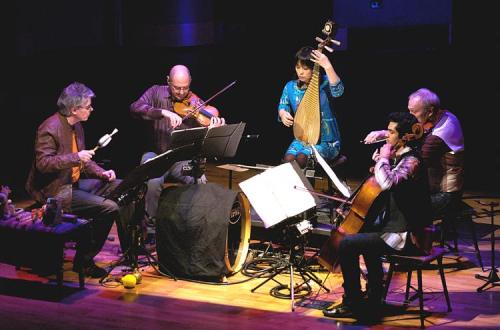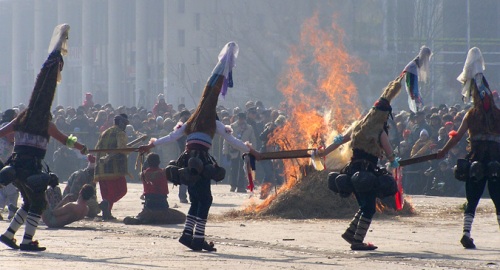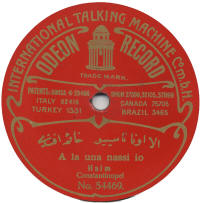The world knows Pete Seeger as an activist and a performer of traditional and original songs; fewer know of his work as a filmmaker. With his wife Toshi, Seeger documented music and dance performances on hundreds of reels of film between 1955 and 1965.
Having started with a self-produced film of how to play the 5-string banjo, Toshi and Pete branched out into filming the musicians and dancers they came in contact with in their countrywide and worldwide tours. Their subjects include the final performance of Big Bill Broonzy as well as the Irish fiddler John Doherty, the sitār player Imrat Khan, Ghanaian fishermen singing rowing songs, and Indonesian court dancers. The Pete and Toshi Seeger Film Collection was acquired by the American Folklife Center in 2004.
 This according to “The incompleat filmmakers: The little-known career of Pete and Toshi Seeger” by Todd Harvey and Stephen Winick (Folklife Center news XXVIII/28 [winter/spring 2006] pp. 3–8). Above, the Seegers in an interview at the Library of Congress in 2006; inset, at the 2009 Clearwater Festival.
This according to “The incompleat filmmakers: The little-known career of Pete and Toshi Seeger” by Todd Harvey and Stephen Winick (Folklife Center news XXVIII/28 [winter/spring 2006] pp. 3–8). Above, the Seegers in an interview at the Library of Congress in 2006; inset, at the 2009 Clearwater Festival.
Below, the Seegers’ 1964 film Singing fishermen of Ghana.
More stories from the American Folklife Center are here.





 On the eve of the event, youths go from house to house collecting wood for the ceremonial bonfire. In the morning the participants choose their roles and don the corresponding masks and sheepskin capes. The stock characters may include a groom, a bride, a devil, a priest, a gypsy, and a dancer with a bear. To the accompaniment of drums and shawms, the dancers parade through the village with abundant comical antics. The ceremony culminates with a spirited dance around the collective bonfire.
On the eve of the event, youths go from house to house collecting wood for the ceremonial bonfire. In the morning the participants choose their roles and don the corresponding masks and sheepskin capes. The stock characters may include a groom, a bride, a devil, a priest, a gypsy, and a dancer with a bear. To the accompaniment of drums and shawms, the dancers parade through the village with abundant comical antics. The ceremony culminates with a spirited dance around the collective bonfire.





